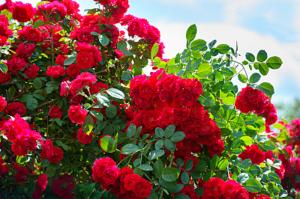What Does a Male Weed Plant Look Like
As cannabis becomes increasingly popular around the world, people are becoming more and more curious about the plant's various aspects. One aspect of cannabis that has particularly interested people is the difference between male and female plants. Although they have similar leaf patterns and structure, male and female cannabis plants differ in their reproductive organs. Understanding the difference is important if you want to cultivate weed for personal or commercial purposes.
The Characteristics of a Male Weed Plant
A male cannabis plant is typically taller and thinner than its female counterpart. They are also likely to have fewer branches and leaves than female plants. Male plants produce small sac-like structures called pollen sacs, which contain the plant's reproductive cells. They typically grow on the joints or nodes of the plant, and look like small puffy balls. If you observe your cannabis plant closely, you can easily spot these pollen sacs around 4 to 6 weeks after germinating the seeds.
Another feature of male cannabis plants is that they do not produce buds. Buds are the flowering parts of the female plant that contain high levels of THC and other cannabinoids. Thus, male plants are generally seen as not valuable for growers and they should be separated and disposed of once the sex has been identified.
The Importance of Male Cannabis Plants
Although male plants do not produce buds, they do play an important role in the cannabis cultivation process. They are used to pollinate female plants to create seeds. Once pollinated, female plants will focus their energy on producing seeds rather than producing buds. This process is also known as "seeding" and may be done intentionally or by accident. However, it is important to note that pollinating a female plant will significantly reduce the quality and potency of the buds.
Another reason why identifying male plants is important is that they can ruin an entire cannabis crop. If a male plant goes unnoticed and gets the chance to release its pollen, it could pollinate female plants in the vicinity. This would lead to seed production instead of the desired bud production. Furthermore, since pollinated buds have a lower THC content, the overall quality of the crop would be poor.
Final Thoughts
Knowing what a male cannabis plant looks like is an important factor in cannabis cultivation. Male plants may not produce the valuable buds, but their role in the pollination process is essential. To avoid pollination and ensuring that you get a high-quality crop, it is important to separate male plants and remove them from the grow space. Proper identification and maintenance can ultimately result in a successful crop and an enjoyable experience.

 how many times do yo...
how many times do yo... how many planted tre...
how many planted tre... how many pine trees ...
how many pine trees ... how many pecan trees...
how many pecan trees... how many plants comp...
how many plants comp... how many plants can ...
how many plants can ... how many plants and ...
how many plants and ... how many pepper plan...
how many pepper plan...






























